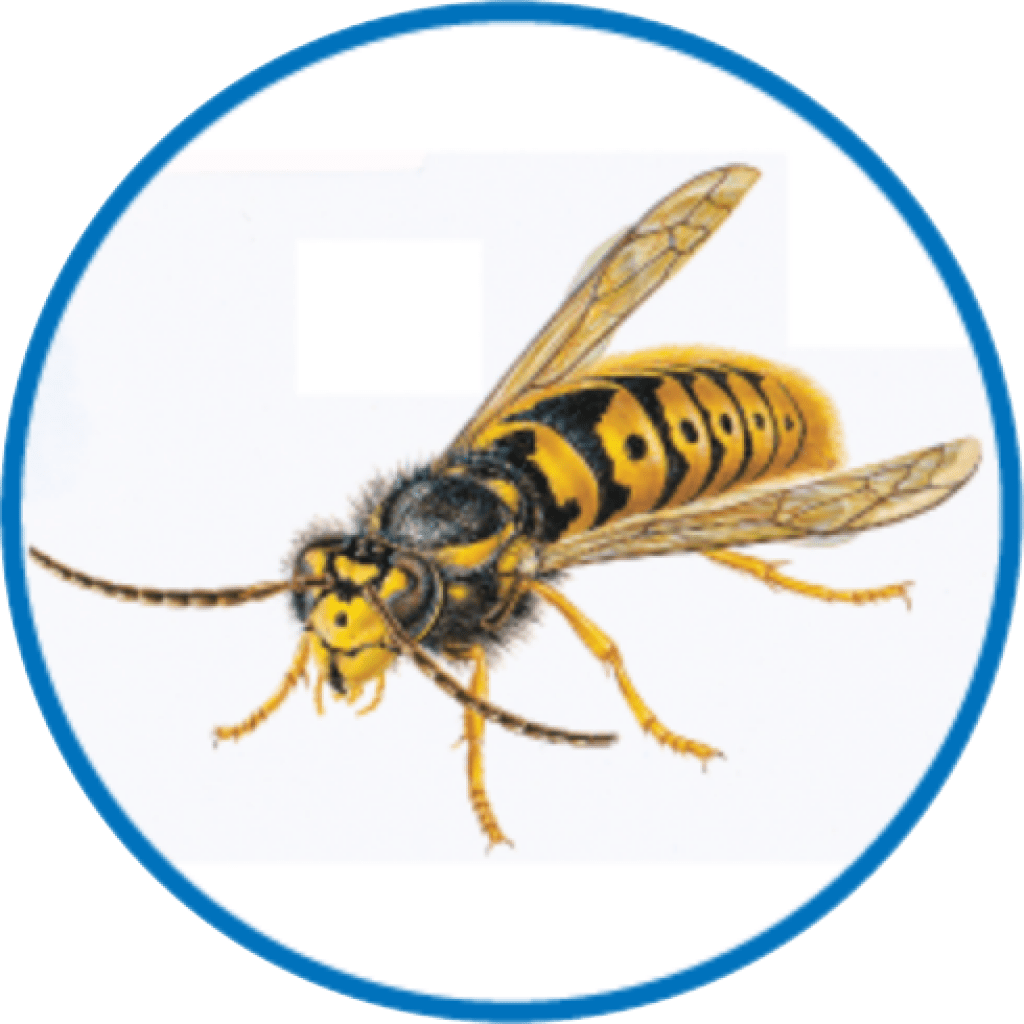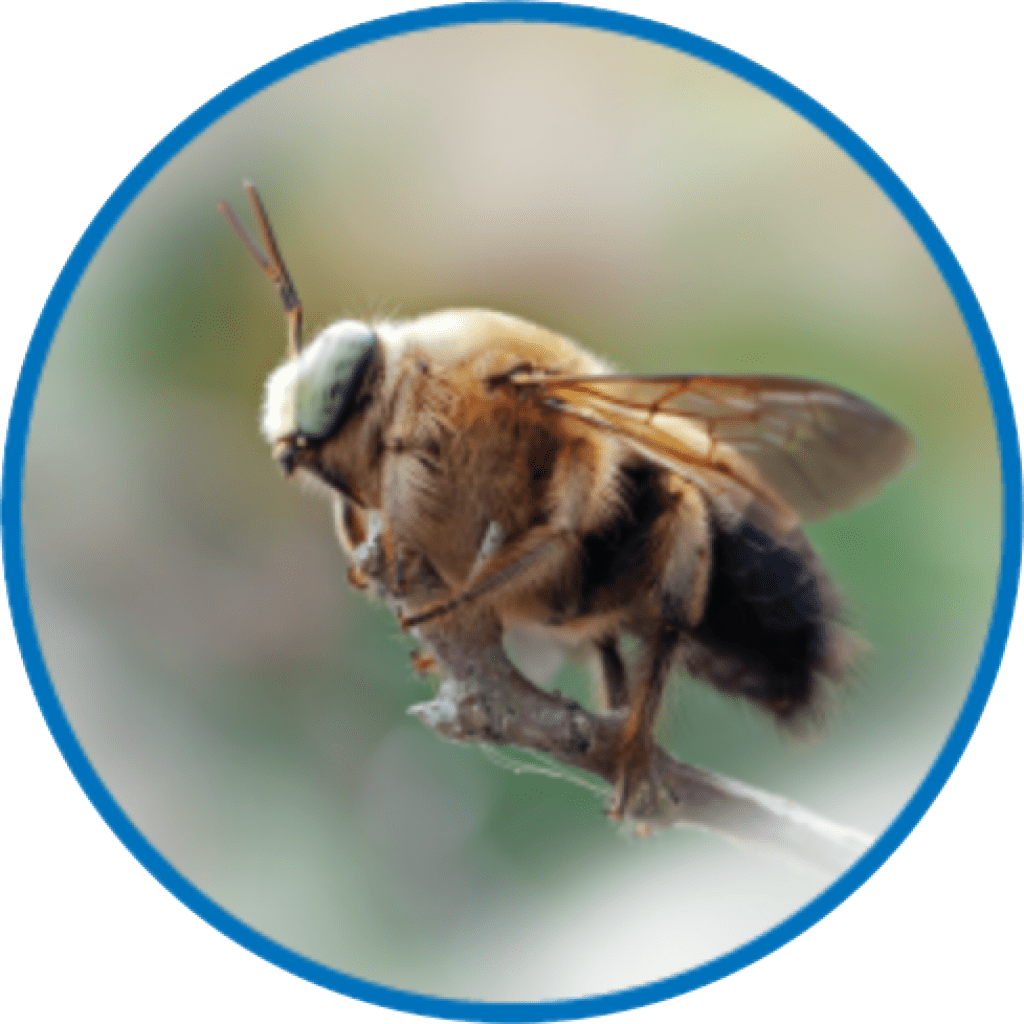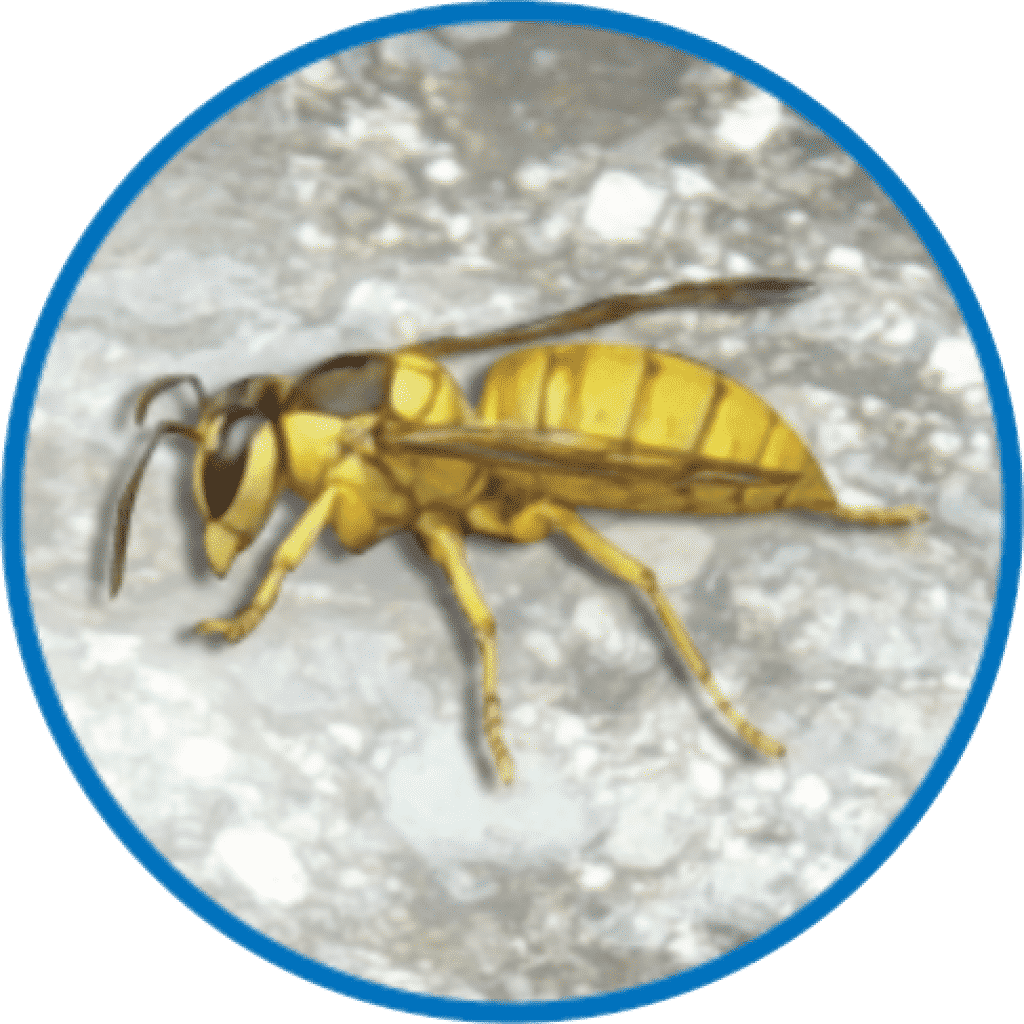COMMON INSECTS - Stinging Insects
Description
Adult workers are about 10 – 16mm long with the queen about 25% longer. The abdomen usually banded with yellow and black and may be marked with red. The wings will be folded along the side of the body.
Biology
Yellow jackets are social insects and live in nests. The adults are made up of sterile females, queens and males. Nest sizes vary.
Habit
Yellow jackets will usually nest in the ground in places where vegetation is bare. If there is vegetation around nest site they will clear the area around the entrance. Yellow jackets are very slow to sting unless the nest entrance is approached and then they are quite aggressive. They can sting repeatedly. Nest located in or on buildings can be a problem when located near human activity.

Description
The adult body length is approx. 12 – 25mm. Carpenter bees resemble bumble bees, but the upper surface of their abdomen is bare and shiny black. They get their name from their habit of boring into wood to make galleries.
Biology
Carpenter bees are not social insects and do not live in nests or colonies. Female carpenter bees bore into sound wood or sometimes into decaying wood to make nests usually consist of tunnels that are partitioned into several chambers, each containing an egg and a supply of food. Development from egg to adult takes about 3 months.
Habit
They cause damage to wooden by boring into timbers to prepare nests. The nests weaken structural wood and leave unsightly holes and stains on building surfaces. Males are territorial and can become aggressive when approached by hovering a short distance in front of the face or buzzing around the head. The male has no stinger.

Description
Paper Wasp is the common name for medium to large-sized wasps that construct nests made of a papery material. The nests of most species are suspended from a single, central stalk and have the shape of an upside-down umbrella and consists of a layer of compartments for the young. Most paper wasps measure about 2 cm long and are black, brown, or reddish in color with yellow markings.
Biology
The colony begins in early spring. As the colony matures, males and the next year’s queens are produced. These queens mate with males and are the only members of the colony to survive through winter. In late summer or autumn, the founding queen, workers (unmated females), and males all die. The newly mated queens hibernate, typically in piles of wood, in vegetation, or in holes. The following spring they emerge and begin the cycle again.
Habit
Adult food consists of nectar or other sugary solutions such as honeydew and the juices of ripe fruits. Paper wasps also feed on bits of caterpillars or flies that are caught and partially chewed before presenting to their young. If you come into contact with the nest there is a high probability you will be stung.


